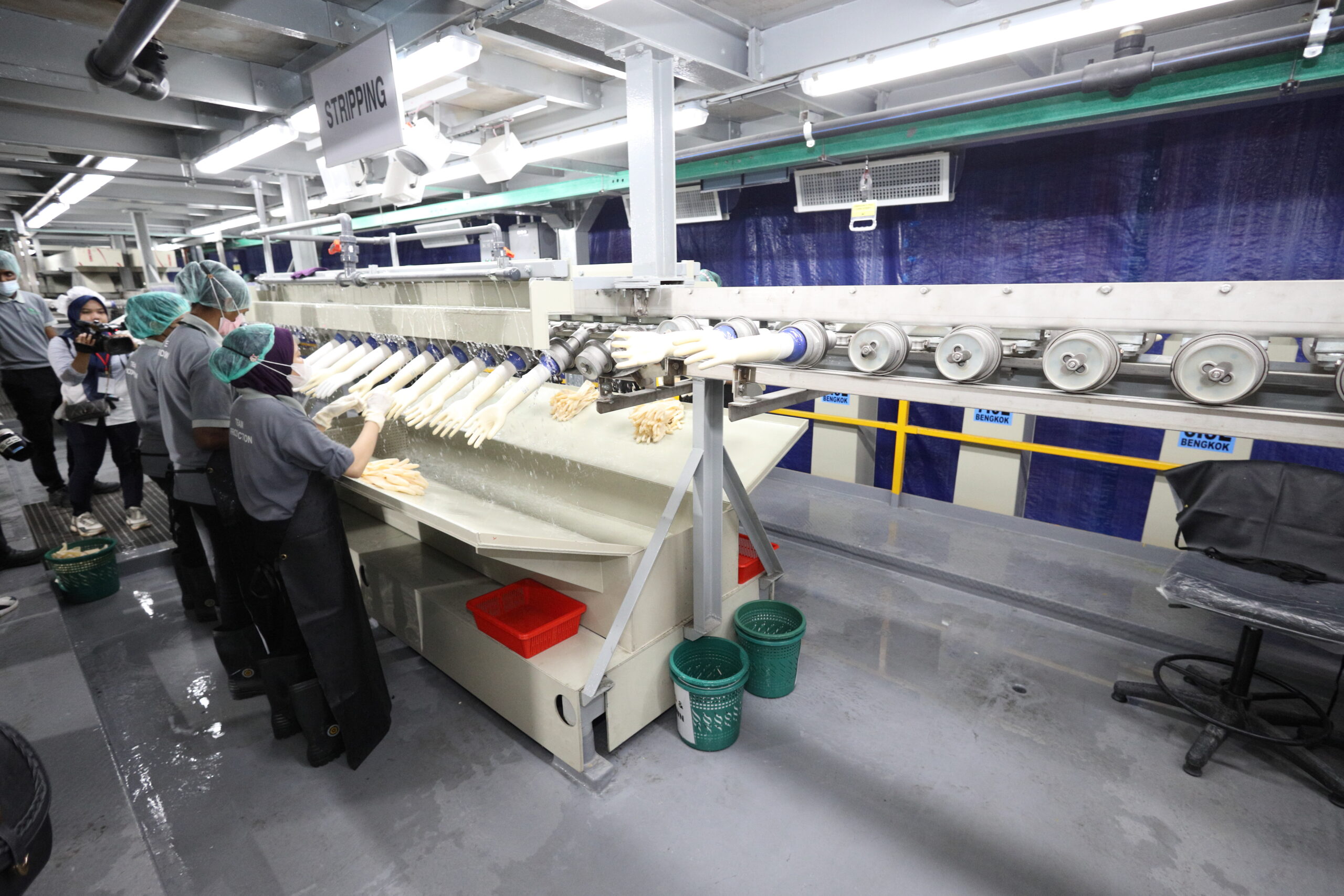Sustainability at its Core: Speak to Molnlycke, Veolia and ENGIE as they Embrace Sustainability Practices in the Manufacturing Industry

Question 1: What are the operational standards and practices being practised by healthcare manufacturing companies and their pitfalls?
The healthcare sector as such has not been at the forefront of adapting sustainability at the core of their business. And also doing so, there is a critical balance between sustainable options and disposable products, where the delicate balance is infection prevention. Within the healthcare sector, infection prevention will always be the number one priority. With that said, it is even more important to focus on the production of such disposables, ensuring that they are being produced as sustainably as possible, minimizing the footprint.
Question 2: Elaborate more on the need to move operations towards more environmental-friendly and sustainable practices.
Mölnlycke’s sustainability vision is to transform its business to become a global leader in sustainable healthcare. Sustainability is a key business driver for Mölnlycke and integral to its operations and product offering. It is the driver for growth, innovation and productivity and an essential part of Mölnlycke’s employee value proposition.
In 2021, following a materiality analysis, the company developed and launched WeCare, the 2030 sustainability roadmap. This reflects Mölnlycke´s commitments and actions toward a sustainable future and supports the objectives of the Paris Agreement on climate change and the UN Sustainable Development Goals. WeCare builds on three focus areas integral to Mölnlycke’s business approach: Green mindset, Responsible relationships, and Ethical business. They influence Mölnlycke’s business models, partnerships, resource management, and innovation, and state how Mölnlycke strives to create a work environment where everyone can excel. WeCare supports the company’s sustainable growth and determination to take a lead in sustainable healthcare.
We are moving well beyond corporate social responsibility to long-term shared value creation at a very high pace of change. By embedding sustainability into our overall strategy and partnering with stakeholders along the value chain, we are developing sustainable product portfolios that bring tangible benefits to customers and help them to deliver on their sustainability ambitions and commitments, while creating new business opportunities for us.
Question 3: What are the knock-on benefits of achieving the above for companies, the industry, and the nations?
For Mölnlycke, the WeCare Sustainability roadmap is all about taking responsibility, being a responsible manufacturer, employer, business partner, and where applicable foreign direct investors. Mölnlycke’s approach to sustainability goes beyond the environmental footprint, it includes all aspects of business where responsible relationships and ethical business are just as important.
We do this for the benefit of the global society, just as for the local communities where we act every day.
Mölnlycke’s ambition is to become the leading provider of sustainable health care, since we see this as the way forward in order to continue to build a strong and prosperous business, making a difference to customers, health care professionals, patients, employees and business partners across the globe.
Question 4: Elaborate more on Molnlycke’s commitment to sustainability and how the brand aims to tackle the environmental issues that come with the manufacture of its medical gloves.
Mölnlycke’s ambition is to become the leading provider of sustainable health care. And on this journey also lead by example, showing other actors in the business how it can be done.
Mölnlycke’s goal is to become a net zero company, covering scope 1-3, by 2050 at the latest. Actions we take to get there:
- 50% reduction of scope 1 and 2 emissions by 2030 (vs baseline 2016)
- 100% fossil-free electricity by end of 2024
- Zero waste to landfill by 2030 • >95% recyclable packaging and > 80 % of all packaging to be made of recycled (PCR) and/or renewable material* by 2030
- Assess the sustainability profile of Mölnlycke’s product portfolio during 2023
Question 5: Will the launch of the new plant reduce Mölnlycke’s carbon footprint?
In general:
- The building will be LEED Certified (LEED®, or Leadership in Energy and Environmental Design, is a rating system set up by the U.S. Green Building Council (USGBC) to assess the environmental credentials of a building, and validate sustainable building strategies and practices used in the design
Energy consumption:
- General statement on energy saving management: We are digitalizing our operations to better understand how we use energy so that we can take action to emit less CO2. ‘This might include redesigning our processes to minimize energy loss or improving the efficiency of machines and other equipment that are using a lot of energy,’
- 100% green energy
- We are installing solar panels that will produce 1MW amounting to about 10% of our total electricity consumption;
- A Building Management System (BMS) will effectively manage all lighting and air conditioners;
- New generation energy efficient boilers will reduce our natural gas requirements; The design of the plant brings a lot of natural light in offices and production areas, reducing the need for lighting
- The window glass is highly reflective and will reduce the need for air-conditioning
- The trees that we chose for our landscaping are water efficient.
Water and wastewater treatment:
- We are implementing an innovative solution in order to recycle close to 50% of our process water as a first step; we commissioned a state-of-the-art wastewater treatment plant that will discharge Grade A water
Question 6: How did Mölnlycke decide on choosing its brand partners – Veolia and ENGIE, and what the partnership entails?
We were looking for partners with a proven track record of offering effective turnkey solutions in renewable energy, gas, and low-carbon energy services that will propel us down the path of carbon neutrality (ENGIE) as well as best-in-class solutions for wastewater treatment (Veolia). When looking for suppliers, we also searched for partners that can support us on this journey beyond Malaysia: The new plant in Malaysia is now the role model for all of Mölnlycke’s plants in terms of sustainability, hence important that our partners potentially can support also on a global scale.
Question 7: What are the unique environmentally friendly and sustainable features of Monlycke’s new plant in Kulim, Kedah?
Energy saving management:
We are digitalizing our operations to better understand how we use energy so that we can take action to emit less CO2. ‘This includes redesigning our processes to minimize energy loss, and improving the efficiency of our machines and other equipment that are using a lot of energy.
New Equipment:
We have implemented new and more efficient boilers and motors to power our lines.
Smart building:
The new plant has lights and air conditioners with sensors that detect daylight and CO2, and it can be adjusted accordingly to reduce wasted energy. We’re also considering the introduction of a smart air conditioning system that responds to up-to-minute changes in outside temperature.
Clever building materials:
To reduce our air conditioning consumption, we are also installing a glass facade with a very high UV protection grade so that it will not transfer heat.
Renewable energy:
The new plant will also produce some of its own energy via solar panels. The energy from the solar panels will cover about 10% of our needs. We’ve also signed a ‘green electricity’ agreement meaning that from 2023, all four Molnlycke sites in Malaysia will be empowered by green electricity. To secure the optimal solution, Mölnlycke has worked together with Engie, a consultancy firm specializing in designing and implementing energy solutions giving minimum environmental impact.
Water Management:
By partnering with Veolia, a world leader in water management, we enable ourselves to be above standards when it comes to water management in gloves production. We need to discharge water that is compliant with regulations. We try to recycle as much as possible to reduce the quantity that is discharged. We anticipate this will reduce our consumption by 50%, and we are looking at possibilities to reduce this by another 30%.
Environmental friendly landscaping:
The trees being planted around the site require minimal irrigation.



